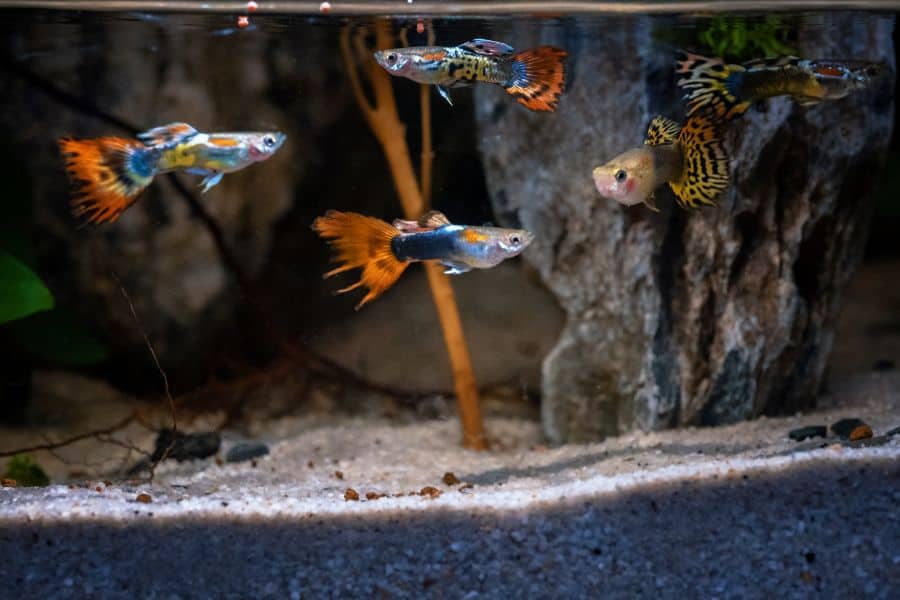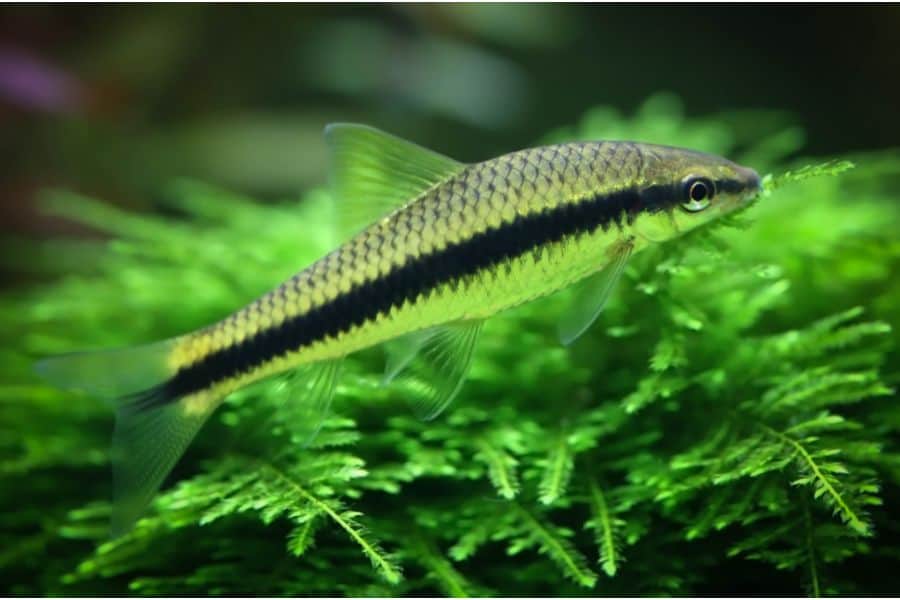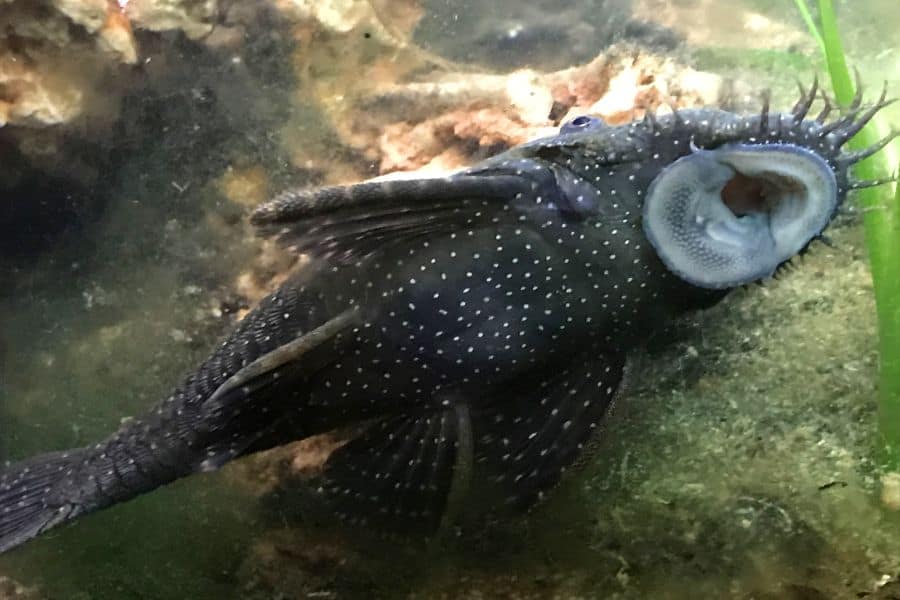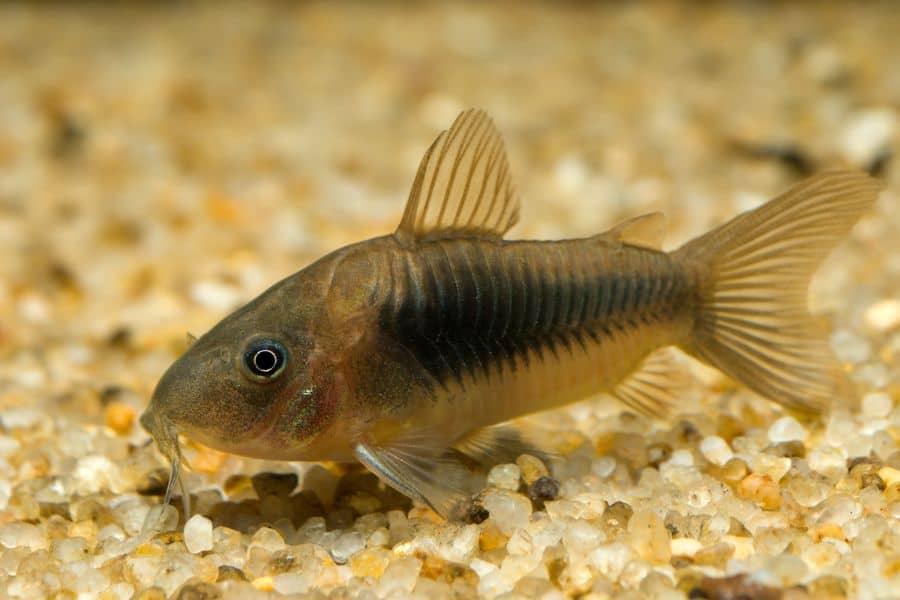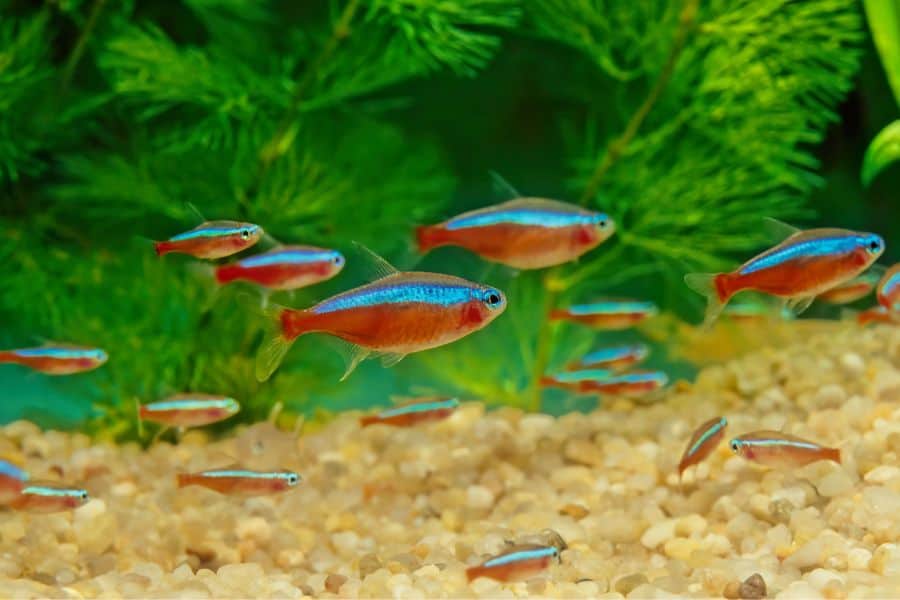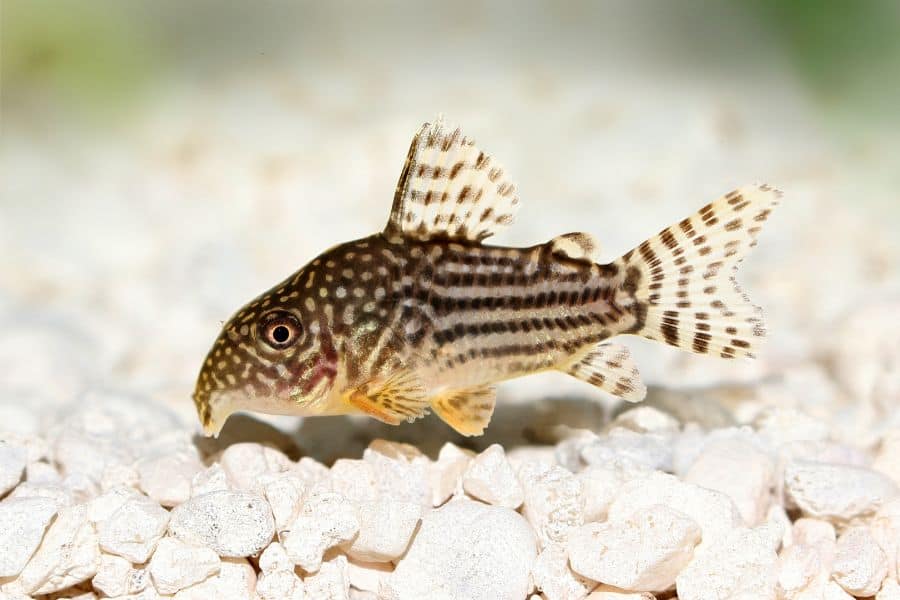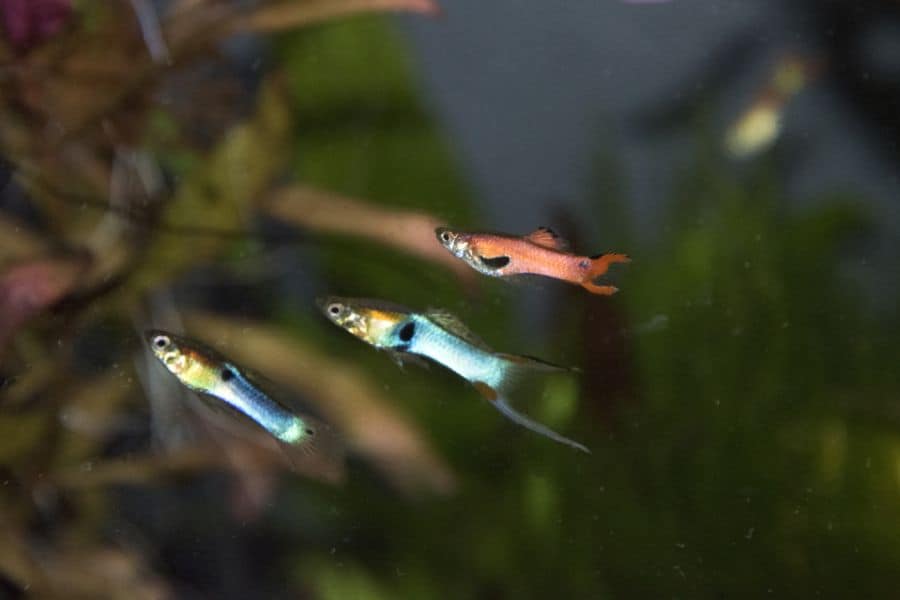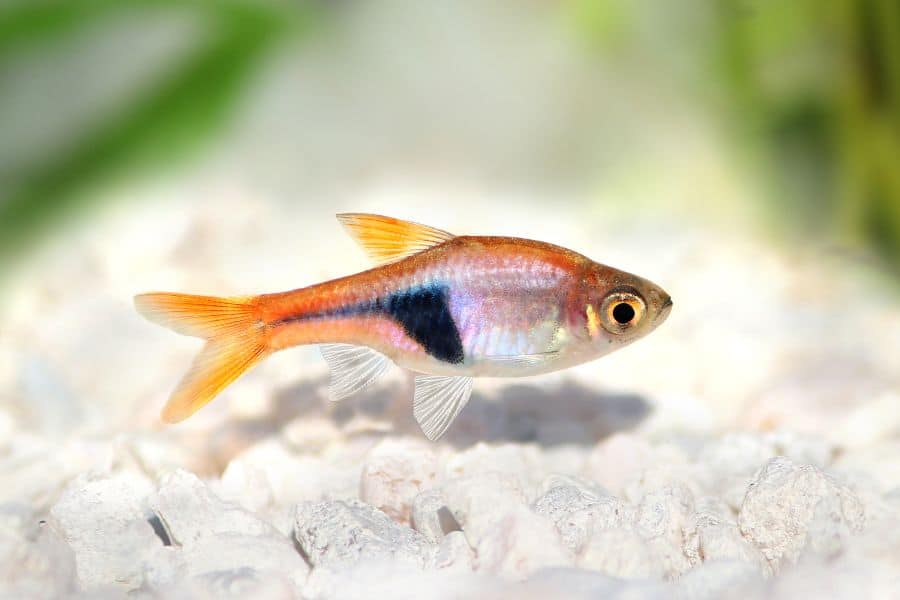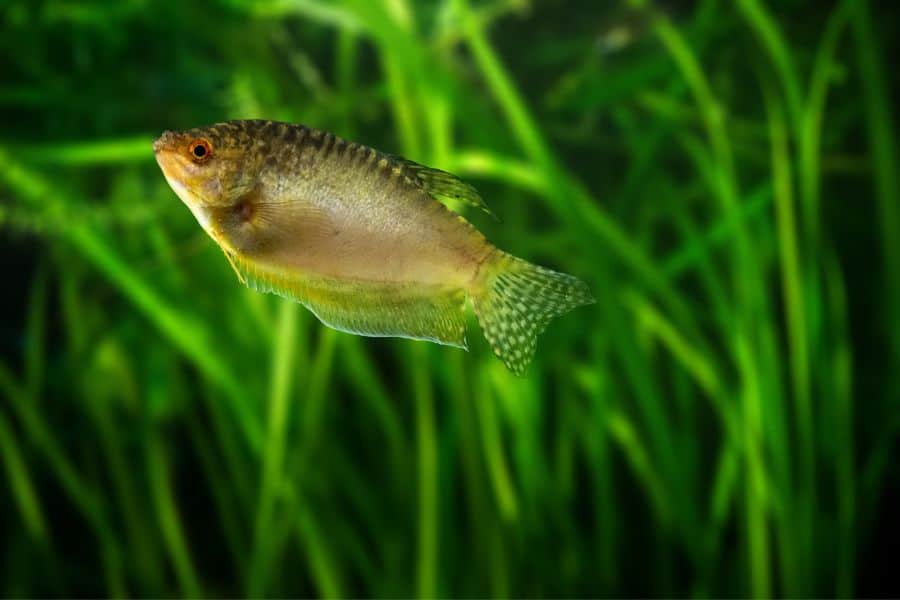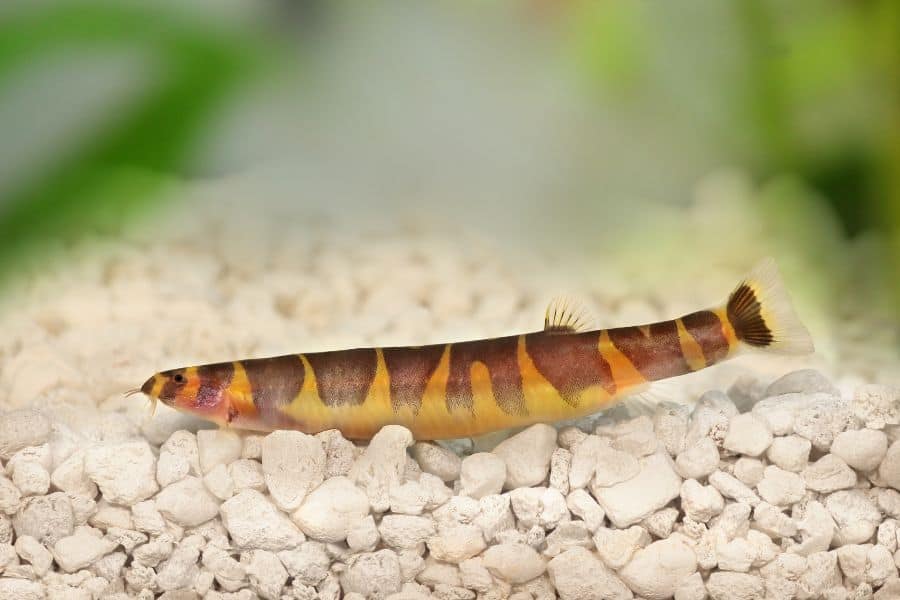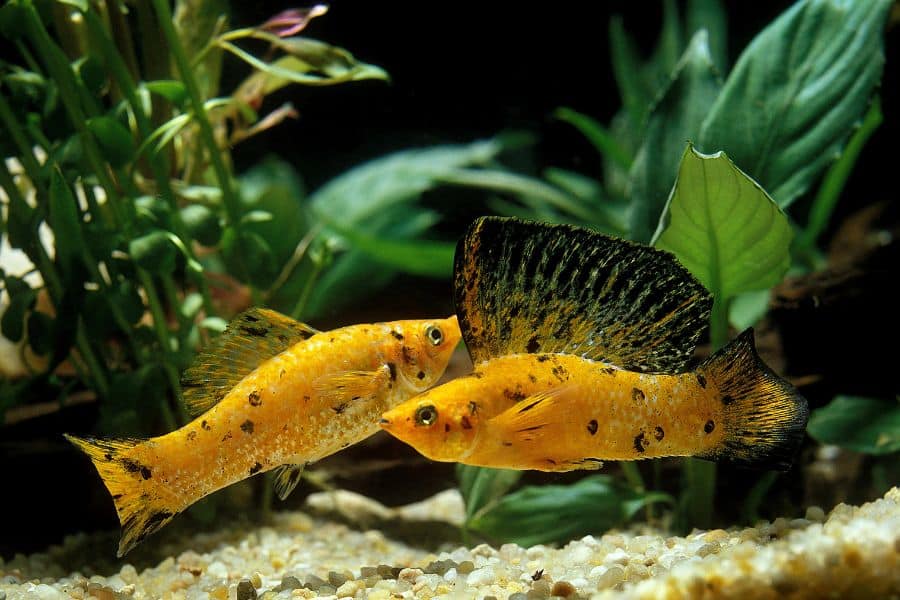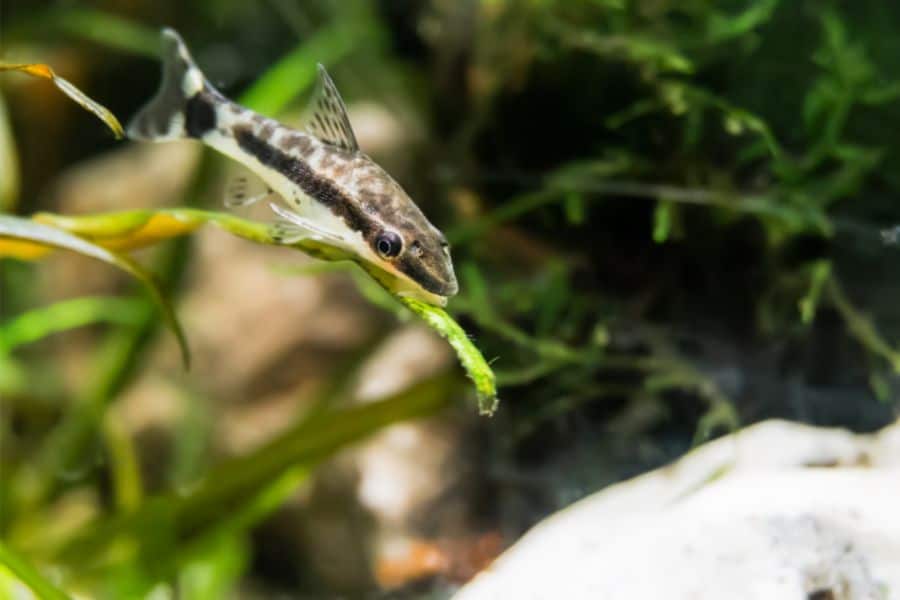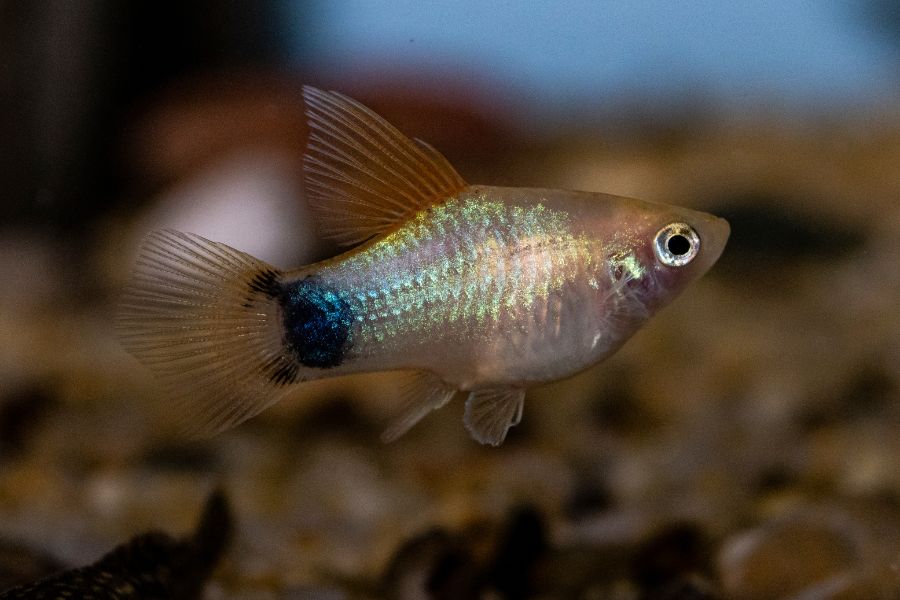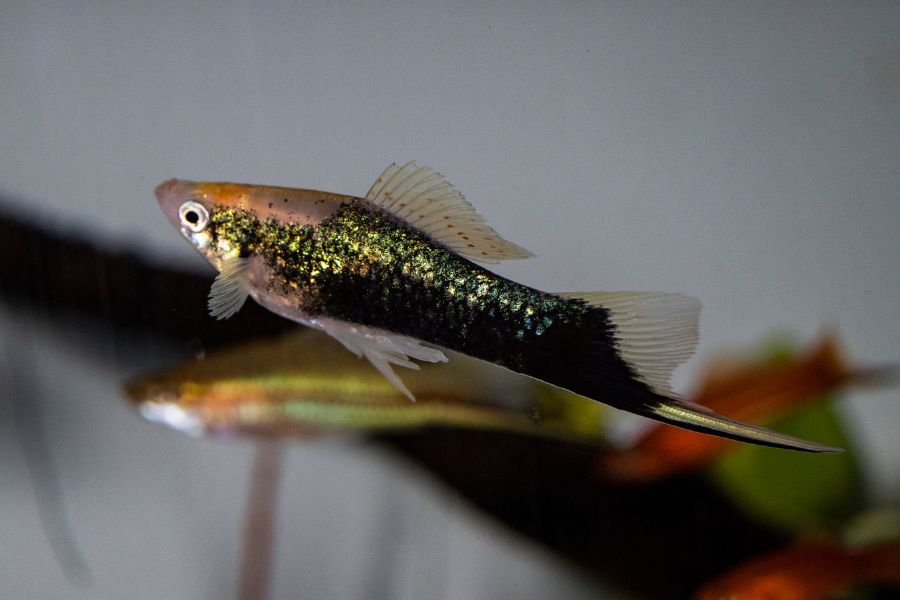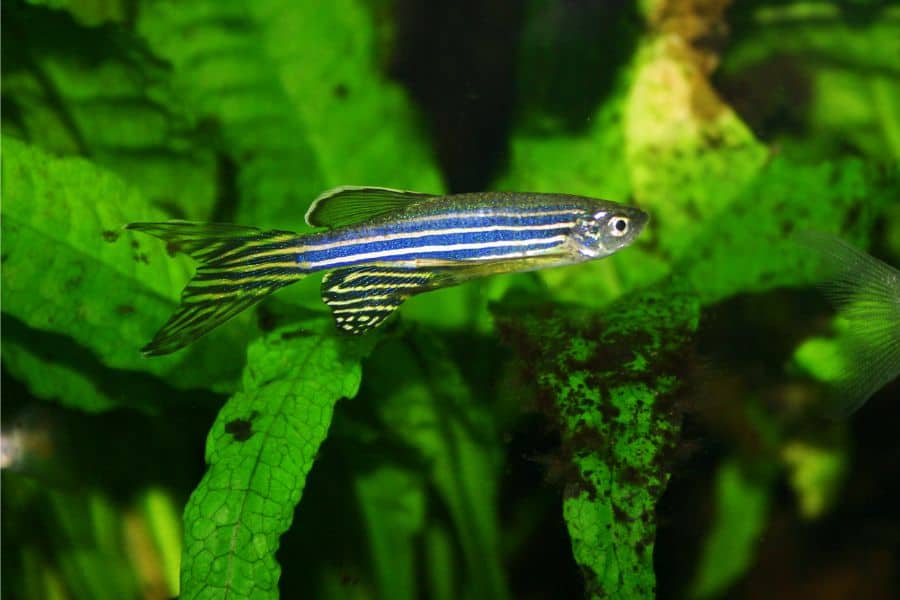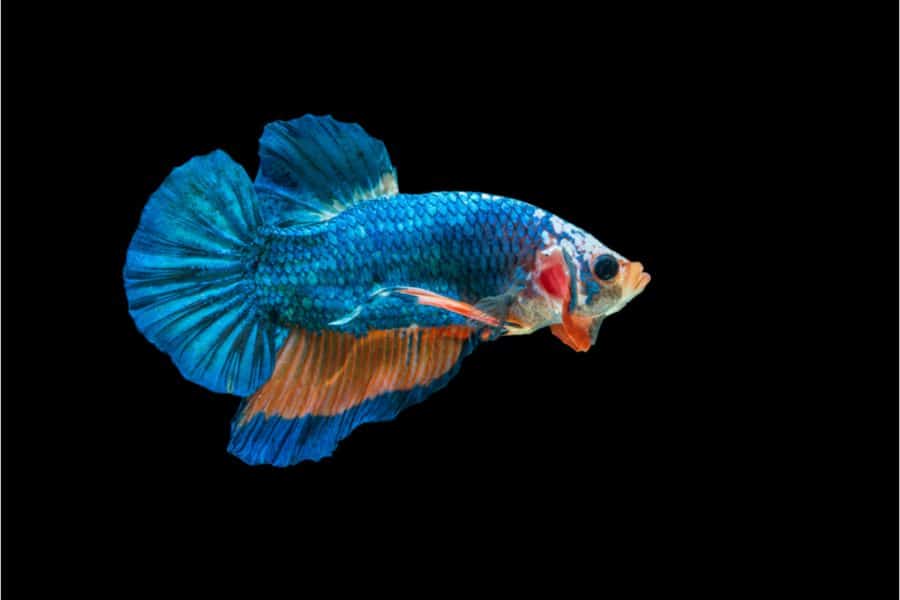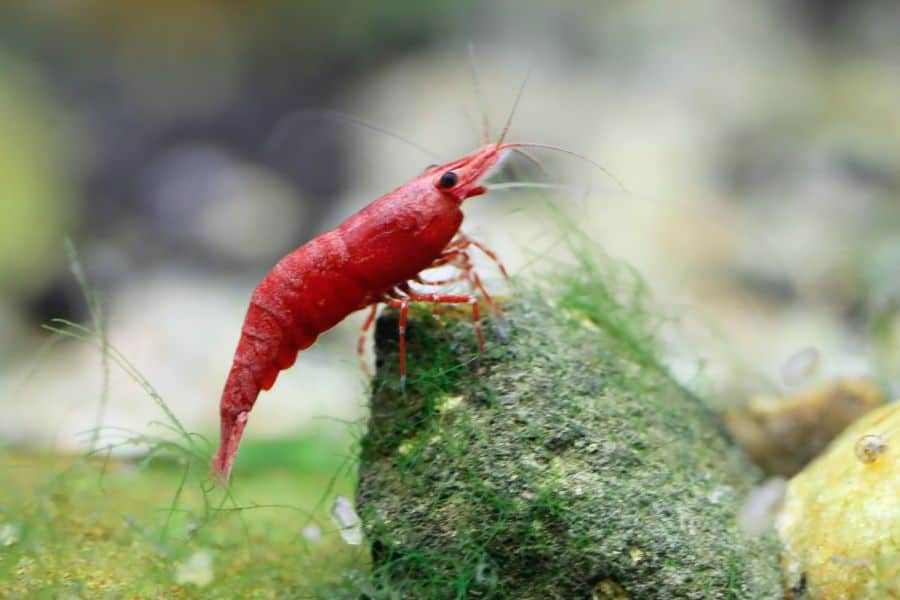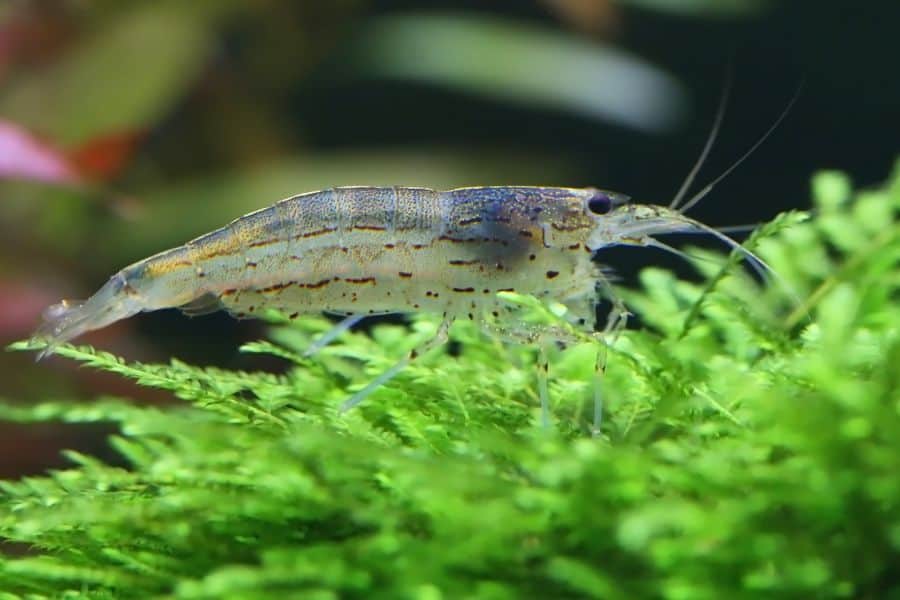Guppy fish are small freshwater fish that can be found in many different colors, including black, red, orange, yellow, purple, blue, and green. They also come in a wide range of shapes.
Guppies are popular with fishkeepers because they are easy to take care of and don’t grow too large. Besides, they are generally very friendly and get along with many types of fish.
Those who want to grow guppies in their aquariums need to find the best tank mates for them. But with so many kinds of fish available, this can be challenging.
If you want to narrow down your search, read on to find the best tank mates for guppies. Find out what fish can live with guppies to make the right choice.
Best Tank Mates for Guppies
Whether you are looking for larger fish suitable for a 30-gallon tank or small ones that can be housed in a 10-gallon aquarium with guppies, there are a lot of options to choose from.
When it comes to choosing tank mates for a guppy fish, you should consider many factors besides the size. Try to find out more about their requirements regarding water conditions, temperament, diet, breeding, and so on.
There are some species you should avoid without any discussion. NEVER keep guppies with aggressive or predator fish like:
- Barbs
- Oscar Fish
- African Cichlids
- Killifish
- Goldfish
- Flowerhorn fish
No matter what type of fish you choose, it is supposed to:
- Prefer the same or similar water conditions that guppy fish require;
- Be peaceful when grown together with other fish types;
- Have no behavioral issues;
- Be of the similar or same size (a size difference shouldn’t be significant – up to 5 inches);
- Like the same food as guppies.
As for water conditions, pH levels for guppies should be around 7.0 or slightly greater. They enjoy hard water that contains generous amounts of magnesium, calcium, as well as other essential minerals.
Keep the water temperature between 72°F and 82°F with an aquarium heater. If you increase the heat above this range, your guppies will make more babies and grow faster but their lifespan will be shorter. At lower temperatures, your guppies will likely live longer but they will give birth to fry less frequently.
When it comes to behavioral issues, it may include everything from fin nipping and biting to chasing and showing aggression towards other tank mates. You need to stay away from fish whose bad behaviors are difficult to control or curb to avoid potential problems.
What about diet? Your best bet is to choose tank mates that are not picky eaters. Ideally, their diet should be the same.
Guppies feed on diverse foods, including plant-based pellets, flakes, brine shrimp, and bloodworms. Adult guppies need to be fed twice or only once a day.
Considering all of these factors, we’ve included the best ones in our list of guppy tank mates.
1. Siamese Algae Eater (SAE)
Siamese Algae Eater (Crossocheilus oblongus) is a freshwater fish that is native to Asia. It has been introduced to various parts of the world including North America, Australia, Africa, and Japan.
It’s a very popular aquarium fish because of its bright colors and algae-eating capability. SAE is an active species compared to other algae eaters that are usually passive in aquariums.
While SAE can cover the whole aquarium, they usually spend their time at the bottom eating or searching for algae. Aside from algae, they eat whatever they encounter on the tank substrate like live food, insects, etc.
Planted tanks are best for their growth. You can keep this peaceful fish with your guppies, tetras, and danios. Siamese Algae Eaters are relatively small and can be found in many pet stores all over the world.
2. Bristlenose Pleco
Bristlenose Pleco is recommended for more experienced fishkeepers because it’s a bit demanding. As a sucker fish, it is an excellent guppy tank mate.
Make sure your tank has at least 15 gallons and the water temperature is from 70 to 78°F. The adult size of Bristlenose Pleco is 4-5 inches, so it’s not larger than full-grown guppies.
This bottom-dweller can keep your tank clean by feeding on algae. Bristlenose Pleco is an herbivore species, meaning it will not prey on your guppies. Don’t worry – it has a peaceful temperament.
If you want to add it in a tank with guppies, create some hiding places to prevent overcrowding. You will also need to take care of temperature regulation.
3. Bronze Corydoras
This resilient and low-maintenance fish can be kept with guppies without a hitch. We recommend keeping them in a group. Bear in mind that extensive feeding is needed.
Although Bronze corydoras look unexciting at first glance, they can be attractive guppy tank mates. The scales of this peaceful fish have green and pink hues that can add some coloring to your aquarium.
These bottom dwellers can survive in different environments with diverse water conditions. Listed below are the key features and requirements of Bronze Corydoras:
- Min tank size: 10 gallons
- Water temperature: 70-81 °F
- Size: 2.5 inches
- Diet: Omnivore
- Care level: Beginner
4. Cardinal Tetra
Tetras are freshwater fish that are often seen in aquariums. Guppy fish is compatible with many Tetra varieties, including Lemon tetra, Rosy tetra, Penguin tetra, and Neon tetra.
Still, our choice is Cardinal tetra and there are good reasons for that. First of all, it is a peaceful shoaling species that can be kept in small community aquariums.
Reaching only 2 inches in length, this beautifully colored fish won’t pose any danger to your guppies. It isn’t aggressive at all. That makes the cardinals the perfect guppy tank mates.
Just like guppy fish, Cardinal tetra loves heavily planted aquariums. Before adding tetras, make sure your aquarium is well-cycled. You are advised to keep them in groups of seven or more, depending on the size of your tank.
5. Cory Catfish
As a scavenger, Cory catfish get along with guppies quite well. What makes these tank cleaners a good fit is their peaceful nature and ease of care.
Cory catfish is a beginner-friendly species that has no special requirements. This bottom dweller isn’t choosy about food either.
While these friendly fish prefer to stay at the bottom of aquariums, you can also zip through the water looking for leftover food. The diet of these omnivores shouldn’t consist of leftovers only, though. Add sinking foods to supplement their diet.
As adults, they reach up to 4 inches (it matches guppies). The minimum tank size for them should be 20 gallons (nearly 100 liters).
6. Endler’s Livebearers
The next one is Endler’s Livebearers (Poecilia wingei). These little, colorful creatures quickly move around the aquarium, hanging out with guppies and other fish.
Do not put them in a tank with larger fish because they are quite peppy, which can make them look like targets. They work fine with guppies. Moreover, their needs for pH and temperature are compatible.
The only problem could be crossbreeding. These two species may crossbreed on occasion, which can result in weak offspring with health issues. That’s why you should use tank mates of the same gender.
Of course, you can use both females and males. Remember that females are more territorial. To lessen aggression and avoid potential problems, keep a ratio of 3 female fish to 1 male. This would work fine.
7. Harlequin Rasbora
Peaceful temperament and small size make this type of fish a great guppy tank mate. It’s a hardy fish that features copper-red coloring with distinct triangle-shaped markings on the back of the body.
Generally speaking, Harlequin Rasbora’s environmental requirements are fairly similar to the needs of guppies. They can thrive in a range of water conditions.
You should use a well-planted tank of at least 10 gallons for the best results. Make sure the water temperature is between 72°F and 80°F all the time.
If you have a large aquarium with ample hiding and swimming space, keep them together in groups of ten (or more). By exhibiting schooling behavior, these easy-going fish are suitable for community aquariums.
8. Honey Gourami
Honey Gourami (Trichogaster chuna) is another kind of fish you can put in a tank with your guppy with peace of mind. Also known as Gourami Fish, it’s a high-maintenance species that is only recommended for experienced fishkeepers.
Despite being a timid species, Honey Gourami is not aggressive at all. Gouramis are social fish in general, so they should be kept in smaller or larger groups – more than five.
Provide them with a lot of hiding space in your aquarium. Make sure the size of your tank is a minimum of 10 gallons (20 gals would be quite enough).
You should also consider using floating aquatic plants to create a shaded environment. It is supposed to resemble their natural habitat in the wild.
While gouramis usually eat insect larvae and tiny insects in their natural environments, they feed on all sorts of live and frozen food in fish tanks. Planted tanks are the best option.
9. Kuhli Loach
The Kuhli Loach (Pangio kuhlii) is an eel-shaped fish found in the Mekong and Chao Phraya River basins. This freshwater fish often hide under rocks, logs, or plants near the bottom of the river.
It also thrives well in planted aquariums. They reach about 4-5 inches in length. These critters can live with guppy fish without any problems. Kuhli Loach won’t provoke other fish.
They hide during the day and quietly scavenge at night, eating leftover food at the bottom of aquariums. That makes them useful members of the “tank cleaning team.”
To ensure the best comfort, maintain them in a trio (or more) in your aquarium. If you want to keep it together with guppies, your tank should have at least 15 gallons in volume.
10. Common Molly
Molly fish (Poecilia sphenops) is our next choice for guppy tank mates. This small low-maintenance fish is famous for its peaceful nature.
Mollies are also known for their high adaptability. They can survive in just about any environment and are not picky regarding aquarium conditions.
A 10-gallon tank would be sufficient for them. The water temperature in your tank should be anywhere from 74°F to 80°F. You can keep them with almost any fish breed, including guppies.
Mollies are very similar to guppy fish in terms of nature and size. The only downside is that they reproduce quickly, which may lead to overcrowding in smaller tanks.
11. Otocinclus Catfish
These diligent scavengers are popular thanks to their appetite for green algae. They are capable of cleaning out an aquarium full of soft algae in 24 hours.
In just a few seconds, these fast swimmers can dart through the entire surface of your aquarium and get to the other end. Just like most other types of fish, they prefer clean well-matured tanks.
They are pretty timid, which comes as no surprise considering their size. Otocinclus Catfish can reach 2 inches only. It isn’t a demanding species – a moderate care level is needed.
These cleanliness-loving fish are community friendly and get along with guppies fine. It’s necessary to supplement their diet with veggies and algae wafers. This will prevent your guppies from being nippy.
12. Platies
Platies are members of the same family as guppy fish. These colorful, hardy fish originate in Central America. They can be found in warm slow-moving rivers and waterways.
Platy fish are popular with aquarists due to their beautiful colors and peaceful nature among other things. You can house them with guppies in your tank. There will be no trouble at all.
These two types of small live-bearing fish are an ideal combination. Both of them have almost identical needs. The preferred water parameters of platies match the requirements of guppies.
For example, they both tolerate a range of pH levels (from 6.6-8.5) and enjoy harder water. Their diet is also similar. They can feed on frozen bloodworms, mosquito larvae, flakes, fruit flies, etc.
Related: Platy and Molly: Similarities and Differences
13. Swordtail Fish
Swordtail Fish (Xiphophorus helleri) would also get along with your guppies quite well. What’s more, a couple of swordtails would make your tank more vibrant with their bright red or orange color.
This peaceful live-bearing species is great for beginners as it’s not difficult to care for. While swordtails prefer similar water conditions as guppies, the water hardness should be a bit lower for their breeding.
Reaching about 14 cm (5.5 inches) in length, Swordtail Fish grow slightly larger than adult guppies. In spite of that, they enjoy their company when kept together in the same aquarium.
The minimum tank size should be 15 gallons. If you want to introduce swordtails in your tank, add a decent amount of vegetation. They would appreciate this!
14. Zebra Danio
Danios – Danio Kerri, Zebra fish, Queen Danio, and Pearl Danio, just to name a few – are also compatible with guppies. They are all great guppy tank mates.
In general, they enjoy similar water parameters and don’t act violently toward one another. Our choice is Zebra Danio (also known as Zebra fish).
Zebra Danio (Danio rerio) is a friendly, fast-swimming species originating in Bangladesh and India. It boasts horizontal, long stripes and hence this name.
These active captive-bred “zebras” reach 2 inches in length and are frequently employed as dither fish in aquariums. They can withstand various conditions and water parameters. So, no special care is needed.
While these fast swimmers are completely safe with guppies, they are more rapid at finding and eating food. As a result, your guppies may end up being hungry in their company. Give them enough food!
15. Betta Fish (Female Betta)
Betta fish (Betta splendens) is a type of freshwater fish that can be found in the wild in various locations. Besides, they are commonly found in pet stores.
The betta fish is one of the most popular types of aquarium fish due to their beautiful colors and patterns. Unfortunately, these can be lost when they are not properly cared for.
Bettas require a special diet that consists of live foods such as brine shrimp, worms, and bloodworms. They also require a heated tank with at least 5 gallons of water.
If you decide to use bettas as guppy tank mates, choose female betta fish just in case. That’s because males can be aggressive sometimes.
As it turned out, female betta fish are more peaceful. Females are also less likely to eat guppy fry.
16. Nerite Snails
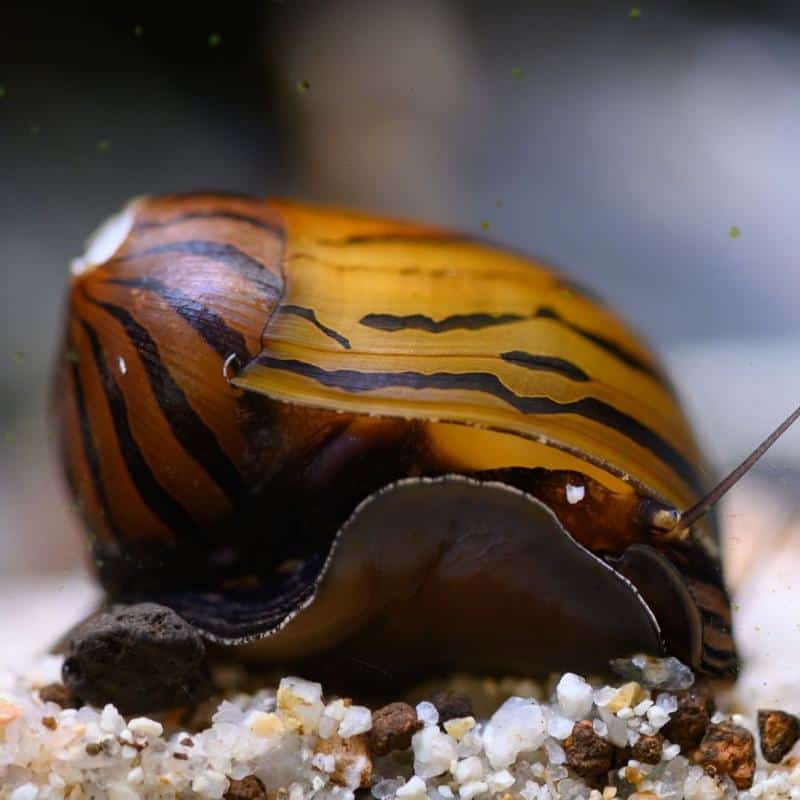
The Nerite Snail is a freshwater mollusk that is often found in aquariums. They are typically sold as pets for freshwater tanks. In nature, they can be found in slow-moving streams, lakes, and ponds.
These small, slimy snails can grow up to 5 cm. They are an excellent choice for those who want to keep their tanks clean but don’t want the hassle of having to do it themselves.
As herbivores, Nerite Snails feed on algae and decaying matter such as dead plants and leaves. They eat any uneaten food in aquariums. These lovely snails can be fed with algae pellets, cucumber, and other vegetables.
They are popular pets among aquarium enthusiasts due to their attractive colors. Your guppy fish would like them.
While Nerite Snails are compatible with guppies, they reproduce quickly, so you may find yourself with a whole tank full of them after just a few months!
17. Red Cherry Shrimp
If you don’t exclusively consider fish for guppy’s mates, then you should also take into consideration Red Cherry Shrimp. It’s an excellent addition to freshwater tanks containing guppy fish.
What makes them a good fit? First, guppies rarely eat newborn Cherry Shrimp. Even so, we recommend that you introduce full-grown shrimp, just in case.
These fast breeders like to explore the space around them, feeding on food particles and dead plant matter. Both processed foods and fresh vegetables should be included in their diet to make it well-balanced.
Red Cherry Shrimp tend to breed fast and they aren’t fussy either. Besides, they enjoy the same tank conditions as guppies.
These easy-going creatures don’t need any special conditions to thrive in aquariums. That makes them great for beginner fishkeepers.
18. Amano Shrimp
Amano Shrimp (Caridina multidentata) is peaceful species that can be kept with guppies. They would be good friends in your tank.
These mischievous bottom-dwellers are a brightly colored addition to fish tanks. They are not prone to aggression and do not eat the fry.
Growing up to 5 cm (two inches) in length, they don’t occupy a lot of space in tanks. Your aquarium should be at least 10 gallons, though.
Amanos are typically found at the tank bottom, consuming nuisance algae and searching for leftover food. Remember that they may steal edibles from fish and other aquarium mates.
Extra dietary care is required. That said, be sure to provide a balanced diet supplemented with pellets, flakes, and vegetables, as well as live and frozen food.
You should also consider providing good plant cover in your aquarium to let them molt. Last but not least, make sure there are hiding places in your tank. Amanos like to hide and they do it very well.
Read More:
Conclusion
There is a decent number of species of shrimp, snails, and fish that get along with guppies. In addition to being compatible with guppy fish, their tank mates should require the same or similar aquarium conditions.
Hopefully, this list of the best guppy tank mates will help you find a good match. All the 18 species mentioned above are proven to be great companions for guppies.
Sure, you can consider other types of fish, too. As long as you pair your guppies with small and peaceful fish, you won’t have any trouble keeping them together. Good luck!
